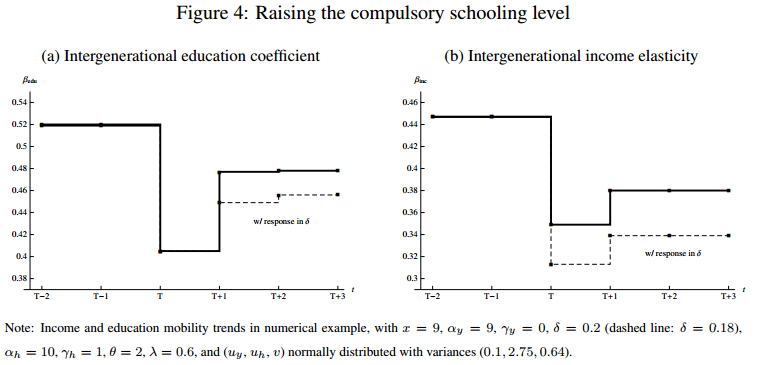Stability is bad for social mobility: that’s the stark conclusion of a new paper from Martin Nybom and Jan Stuhler. Disruptions in the existing socio-economic order—a war, a technological revolution, a universal education initiative—by contrast, tend to promote mobility by reshuffling the distribution of opportunity among citizens.
Social Churn Equals Opportunity
Following a disruption–either a positive or negative kind—the returns to different skills are likely to change. More children at the bottom are able to reach the top. Those at the top find their success is less assured. Societal churning means that there is mobility in both directions.
For example: a war destroys a nation’s wealth; citizens restart their lives on a more level playing field, and more poor kids are able to grow rich. Or: the government makes high school free; poor kids become more educated and more able to compete with the rich. Both these events lead to large increases in social mobility for the first generation that experiences the event.
…For One Generation, At Least
The generation most affected by the disruption will see stronger mobility rates. But society starts to resettle as the second generation grows up. The parents—members of the first generation—that became rich will likely endow their children with certain advantages. The children of less wealthy parents don’t enjoy those benefits. Without another disruption, a disproportionate share of the rich-born children will go on to become rich themselves because of the advantages their parents passed on to them. The result? Social mobility declines in the second generation compared to the first. The process continues in subsequent generations, unless there’s another destabilizing event.
In their paper, “Interpreting Trends in Intergenerational Mobility”, presented at the American Economics Association conference this month, Nybom and Stuhler first illustrate their story with mathematical models and computer simulations. Here’s a stylized example:

Notice that the heritability of success—the intergenerational coefficient—declines in the generation affected by the event (in other words, relative mobility goes up), but then creeps upward again as success “breeds” success.
Swedish School Reform: A Test
The theory is put to the test with an impressive empirical analysis, based on a 35% random sample of the Swedish population born between 1932 and 1967. The “disruption” in this case is benign: an increase in the compulsory schooling age, which spread across Swedish cities during the 40s and 50s. Sure enough, the reform lowered educational and income persistence in the first generation. But persistence ticked up again in subsequent generations, as society settled into the new system – though it is worth noting that the effects did not disappear altogether.
Mobility: Disruption Needed?
The US seems to have had more upward mobility in the middle of the last century than in the last few decades. But there were some big mid-century disruptions: war, educational changes, and increased migration. Since then things have settled down, and mobility rates have flat-lined. The implication is that policy tinkering won’t be enough to kick-start greater mobility. Disruption – hopefully of a positive kind – may be needed.


Commentary
Creative Disruption: Systemic Shocks and Social Mobility
January 21, 2015